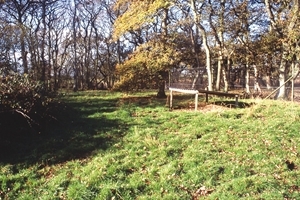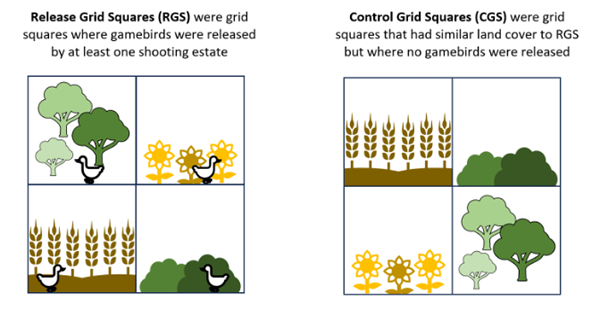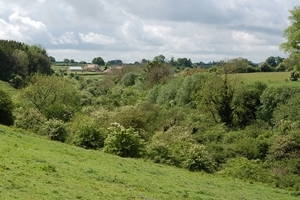Although this paper is not published by GWCT scientists and does not necessarily represent the views of the GWCT, this summary has been produced for our members, and the wider public, to increase the accessibility of the scientific literature. It is important to remember that each individual paper should not be thought of alone, but considered in the context of the wider evidence available in that area.
Key points
- Gamebird releasing occurs on a large scale across the UK every year, with little known about the wider ecological impacts of this on different habitats and species.
- Previous studies have been limited to a small number of sites, or a relatively short period of time for study, and so were unable to provide information on a wider scale.
- Publicly available wildlife and gamebird releasing data was studied on a 1km square level to identify local and regional impacts of gamebird releasing on a range of species groups.
- Overall, there were more wildlife records found where gamebird releasing occurred, and both positive and negative impacts were observed.
- Studies like this highlight the complex ecological impacts of gamebird releasing, with large datasets allowing scientists to study impacts on a wider range of species, over a larger area, than practical through fieldwork.
Background
 Recreational shooting can involve releasing large numbers of gamebirds into agricultural, grassland, or woodland areas. In the UK this is a widespread practice, with an estimated 32 million pheasants, 9 million red-legged partridges, and 3 million mallards released each year. As well as releasing the birds, gamekeepers create and manage habitats, provide food for the birds, and often carry out lethal predator control.
Recreational shooting can involve releasing large numbers of gamebirds into agricultural, grassland, or woodland areas. In the UK this is a widespread practice, with an estimated 32 million pheasants, 9 million red-legged partridges, and 3 million mallards released each year. As well as releasing the birds, gamekeepers create and manage habitats, provide food for the birds, and often carry out lethal predator control.
Gamebirds can have direct impacts by eating plants and animals, and can add nutrients to the environment through their waste. They also potentially help spread diseases, compete with local species for resources, and may supplement the diets of nearby predators. Habitat creation or management, provision of food, and predator control can all have a beneficial impact on habitats and local species.
These local and wider ecological impacts of releasing gamebirds for shooting are complex and not well understood. This is partly due to how complicated ecosystems and species interactions can be, with other species and with their habitats. Studies suggest that gamebird releasing can affect invertebrates, farmland and woodland birds, rodents, small mammals, reptiles, and avian predators, positively or negatively. This is likely to depend on the site and its management.
Shooting estates are usually less than 400 hectares in size. Pheasants generally disperse less than 1km away from where they are released, and so the impacts of releasing are thought to be localised. Previous research has not been able to estimate the impacts of gamebird releasing on different species, across large areas. This is because studies have generally looked at small numbers of sites, specific regions, or certain species groups.
What they did
To try to better understand the impacts of gamebird releasing, scientists from the University of Exeter and the National Biodiversity Network tried to see if they could use existing data to identify any impacts. To assess local, regional, and national effects of gamebird releasing they studied data using 1km grid squares, categorised in two ways:

The team gathered information about gamebird releases from the APHA Poultry Register, where shooting estates releasing more than 50 birds must register. Compliance with this is thought to be low, so there are shoots that release birds but are not on the official register. The researchers extracted information about pheasants, partridges and ducks released for shooting, giving them a total of 3,284 ‘release grid squares’ across the UK to study. 75% of sites in these grid squares released fewer than 3,000 birds, making them small shoots. Only 9% of sites released more than 10,000 birds, considered to be large shoots.
The scientists learned more about the habitats found within release squares using UK land use data. Release squares mostly contained arable land, broadleaf woodland, and grassland habitats. The scientists then used this information to identify ‘control grid squares’ – those that had similar mixes of habitats, but no gamebird releases. There were 32,147 suitable grid squares across the UK, and 3,284 were then randomly selected for comparison to release squares.
To try to assess the impact of gamebird releasing on other species, observational wildlife records were sourced from the National Biodiversity Network Atlas, which is a national store of biodiversity data. The study looked at where and when different species were observed, with sightings of the following groups between 2000 and 2020 used:
- Generalist predators (foxes and birds)
- Rodents and grey squirrels
- Reptiles
- Butterflies, beetles and ground beetles, and grasshoppers
- Farmland and woodland birds
What they found
Across all the grid squares studied, there were 32.5% more species records reported from release squares than from control squares.
Findings for generalist predators varied. There were 42% fewer foxes reported in release squares, with fox numbers lowest where more gamebirds were released. More carrion crows were present in release squares, but there was no relationship between the number of crows and the number of gamebirds released. When looking at actual numbers of records, there were more buzzards in release squares. There was no difference in the numbers of ravens, jays or magpies recorded in release squares or control squares.
Rodents and grey squirrels were more often recorded in release squares than in control squares. There were 89% more reptile records in release squares, but there was no statistically significant difference in the number of reptiles present in release or control squares. As a result, the study was unable to conclude that releasing does, or does not, affect reptiles.
There were more butterflies, but fewer beetles, found in release squares. However, there was no difference in the numbers of ground beetles and grasshoppers recorded in release squares or control squares.
More birds, and more species of farmland and woodland birds, were found in release squares when looking at actual numbers of records. When looking at bird records as a proportion of the wildlife reported in each grid square, there were more woodland birds in control squares.
What does this mean?
 This study concluded that there is more biodiversity found where gamebird releasing occurs. It also found that there are both positive and negative effects of gamebird releasing on different species. This is in line with previous studies, which have reported varied impacts of releasing.
This study concluded that there is more biodiversity found where gamebird releasing occurs. It also found that there are both positive and negative effects of gamebird releasing on different species. This is in line with previous studies, which have reported varied impacts of releasing.
There was little evidence that releasing gamebirds supports local increases in fox numbers, as is often claimed elsewhere. The paper suggests that larger shoots are more effective at controlling fox numbers. Some research has found the opposite – that larger shoots host more foxes. This study highlighted that this varies across the UK, with some areas more successfully keeping fox numbers low than others.
Gamebird releasing also appeared to have mixed effects on avian predator numbers. Crow and buzzard numbers were higher in release squares, suggesting that in some places crows are not being effectively controlled by gamekeepers. It is difficult to know if higher crow and buzzard numbers in release squares is because they scavenge dead gamebirds, consume the bird feed provided, make use of good quality habitat or the food found in it, or a combination of these factors. Rodent and squirrel numbers being higher in release squares suggests they also make use of the food and habitat resources made available at release sites. Rodents and squirrels may also benefit from lower fox numbers found on release sites.
The fact that fewer ground beetles were found in release squares was not a surprise, and could be the result of gamebird poults consuming them, or because gamebirds can change the vegetation and soil nutrient levels, or both. Selection and management of woodland habitats for gamebirds, in particular, is the most likely reason for there being more butterflies found in release squares, with these insects benefitting from the creation of open woodland rides. Gamebird habitat management also appeared to support woodland and farmland birds, which likely benefit from the additional food and areas of game crops provided for released gamebirds.
When studying observational wildlife records, it can be difficult to determine if an area genuinely has more species to be observed, or if more of those observations have been recorded. Because of this, it is important to try to understand if the data accurately represents real life. Over 75% of game shoots are part of agri-environment schemes, with around 36% having nature designations (such as SSSI status) on their land. Because of this, there is a chance that higher numbers of wildlife records reported from release squares is the result of shoot owners encouraging surveys to help monitor the species on their land. This might suggest that there is not actually more wildlife in release squares, but that more time has been spent recording the wildlife present. Many shoots also manage the habitats present on their land to help support the gamebirds they release, and this is likely to benefit some wildlife.
After thorough examination of these factors, the team determined that there are both positive and negative impacts for different species groups but overall, more wildlife records were found in release squares. This is likely because more wildlife was present where gamebird releasing occurs.
Read the original paper
Madden, J. R., Buckley, R. and Ratcliffe, S. (2023) Large-scale correlations between gamebird release and management and animal biodiversity metrics in lowland Great Britain. Ecology and Evolution, 13(5): 1-12.